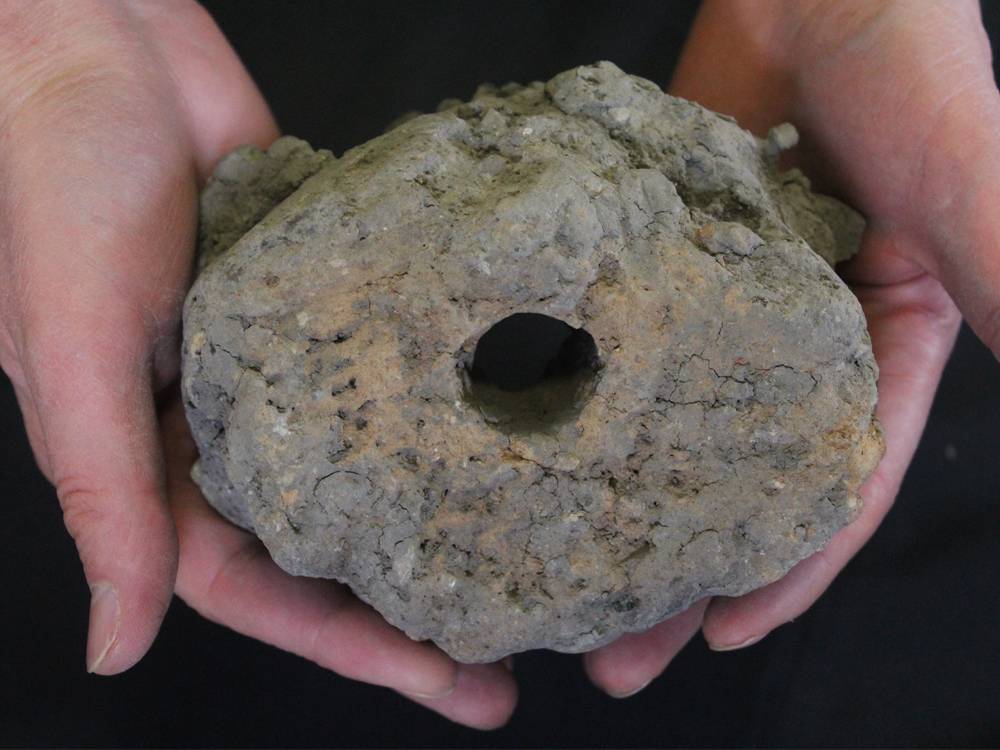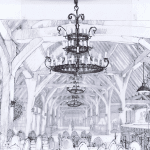Wittenham Clumps finds on display at Festival of Discovery on February 17th & 18th at Earth Trust
Archaeologists have unearthed an exceptionally rare Iron Age blacksmith’s workshop in South Oxfordshire, dating back nearly 2,700 years to the earliest days of ironworking in Britain.
The discoveries were made by archaeologists from DigVentures during excavations at the Earth Trust, near Abingdon. Just downslope from the iconic Wittenham Clumps, the dig revealed a smithy containing artefacts like pieces of hearth lining, hammerscale, iron bar, and the exceptionally rare discovery of an intact tuyere – evidence of a serious ironworking operation.
“At Earth Trust, we’re thrilled whenever discoveries at Wittenham Clumps shine a light on the deep history of human activity in this area,” said Anna Wilson, Head of Experience and Engagement.
“Nearly 10,000 artefacts were recovered during the dig, and as we continue to analyse them, the story gets more and more captivating. These new discoveries are literally forging new history before our very eyes and revealing more of the ancient mysteries behind this very special place – we can’t wait to share more through our upcoming Festival of Discovery.”

Festival of Discovery
The key finds will be on display February 17th-18th, during a special Festival of Discovery at the Earth Trust Visitor Centre. The festival includes talks from the archaeologists, hands-on workshops with the archaeologists, and a free pop-up exhibition showcasing artefacts like the tuyere and rare small finds.
Visitors will have an exclusive chance to see the discoveries up-close and learn more about the skills of these early Oxfordshire craftsmen. Tickets and more information are available at earthtrust.org.uk/whats-on.
Ancient Blacksmiths of the Clumps
Radiocarbon dating reveals the smithy dates from 771-515 BC, soon after ironworking first arrived in Britain around 800 BC. The size of the hearth suggests this was no ordinary village blacksmith, but rather the workshop of an ‘elite’ or ‘master’ ironworker producing swords, tools, wagon wheels, and other high-value objects.
“It’s exceptionally rare to find a complete tuyere, especially one that’s as old as this. Although there are examples from later periods, including Saxon, Viking-age, and medieval pieces, this is one of the only known Iron Age ones in the country, if not Europe. The fact that it dates not just to the Iron Age, but to the first few centuries of ironworking in Britain, is remarkable” said Gerry McDonnell, the archaeometallurgical specialist who examined the finds.
“What’s more, the size of it suggests we’re looking at a hearth that was much larger and more specialised than that of your average village smithy” he continued.
The vast majority of artefacts produced in the Iron Age weren’t very big and could be produced with quite a small hearth, while larger hearths would have taken much more skill and resources to control, said the researchers.
“The only reason a blacksmith would need a bigger hearth would be if they were forging something long like swords or trade bars, or big, like cart wheels. And these wouldn’t be done by your average village smithy who would normally take care of everyday objects and repairs.
“The fact that this early Iron Age smithy had a specialist tuyere shows us this was much more likely to have been a serious operation by a highly skilled, elite, or master blacksmith” McDonnell concluded.

Even though the Iron Age takes its name from the mastery of this metal, sites that provide us with direct evidence of how they did this – especially ones from such an early period – are extremely scarce.
“It’s always exciting to uncover the remains of ancient buildings that were occupied thousands of years ago, but it’s even more special when we find such direct evidence of who lived there and what they were doing inside,” said Nat Jackson, DigVentures Site Director, who led the excavation.
“In this case, the range of evidence is remarkable. We’ve got almost every component of the blacksmith’s workshop; the building, internal structures, hearth lining, tuyere, even the tiny bits of metal that fly off when the blacksmith is hammering the metal. The only thing we haven’t found is the tools.
“It’s an incredible thrill to uncover something like this. It basically allows us to peer back in time and see what could have been one of Britain’s earliest master blacksmiths at work,” he added.
Excavations also revealed an Iron Age settlement including a cluster of roundhouses, an Iron Age pantry, and evidence of ceremonial or ritual activity including animal burials, as well as a later Roman villa where archaeologists found the remains of a tiny Roman pet dog.
Local residents now have an exclusive opportunity to view these finds first-hand and learn more about Oxfordshire’s ancient ironworking heritage at February’s Festival of Discovery.
Main image credit: Digventures










